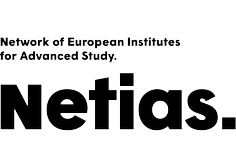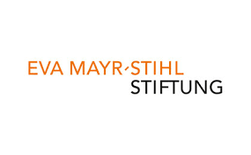Dr. Ervan Nurtawab
Manuscripts, translations and commentaries of the Qur’an in Southeast Asia
External Junior Fellow (Alexander von Humboldt Fellow)
September 2022 - August 2024
CV
Ervan Nurtawab is a Senior Lecturer of Qur’anic studies at Institut Agama Islam Negeri (IAIN) Metro, Indonesia, and Research Fellow at the Institute of Asian, African, and Middle Eastern Studies, Sophia University, Japan. Ervan specialises in the study of Islamic manuscripts and textual tradition in Southeast Asia, especially on the ways in which Muslims copied Qur’an manuscripts, translated, interpreted meanings of the Qur’an and reflected them in the public spheres. Ervan completed his Ph.D. from Monash University in 2018 for Ph.D. thesis title: Jalalayn pedagogical practice: Styles of Qur’an and tafsir learnings in contemporary Indonesia, under the supervision of Professor Julian Patrick Millie and Professor Peter G. Riddell (accessible online at: Jalalayn pedagogical practice: Styles of Qur’an and tafsir learning in contemporary Indonesia (monash.edu)). For his doctoral research project, Ervan studied practices of Jalalayn learning in different pedagogical settings: traditional, modern and competition stage, and how the existence of this work reflects different understandings and manifestations of Islam in the Indonesia Islamic public sphere. His interest in the current state of traditional Islamic education in Indonesia is reflected in his two publications: “Restructuring traditional Islamic education in Indonesia: Challenges for pesantren institution,” Studia Islamika 29:1 (2022): 55-81; and, "The Decline of traditional methods in changing Indonesia: Trends of Bandongan-Kitab readings in pesantrens." Studia Islamika 26:3 (2019): 511-542.
Publiktionen (Auswahl)
- Nurtawab, E, and A. Deswijaya (2022): "Verse numbering system and Arabic references in Bagus Ngarpah's early 20th century Javanese Qur'an," Indonesia and the Malay World 50:147 (2022): 173-197.
- Nurtawab, E. (2021): “Tafsīr al-Jalālayn at the Crossroads: Interpreting the Qur’an in Modern Indonesia.” Australian Journal of Islamic Studies 6:4, 4-24 (Special Edition).
- Nurtawab, E. (2020): Qur’anic readings and Malay translations in 18th Century Banten Qur’ans A.51 and W.277. Indonesia and the Malay World 48:141.
- Nurtawab, E. (2019): The Malay tafsīr in the Sheik Muhammad Said collection in Marawi City, Lanao del Sur, Philippines. In O. Fathurahman, M. Kawashima and L. Riwarung (Eds.). The library of an Islamic scholar of Mindanao: The collection of Sheik Muhammad Said Bin Imam Sa Bayang at the Al-Imam As-Sadiq (As) Library, Marawi City, Philippines: An annotated catalogue with essays. Tokyo: Institute of Asian. African, and Middle Eastern Studies, Sophia University, pp. 119-144.
- Nurtawab, E. (2016): Qur’anic translations in Malay, Javanese and Sundanese: A commentary or substitution? In M. Daneshgar, P.G. Riddell and A. Rippin (Eds.). The Qur’an in the Malay-Indonesian world: Context and interpretation. London: Routledge.
FRIAS Projekt
Qur’an Manuscripts in Southeast Asia: Differences, Diversities and Standardisation
The Qur’an tradition in Southeast Asia has been established for centuries, the known oldest extant manuscript dating from as early as the 16th century. However, the process of standardisation of Qur’anic manuscripts and the development of a Southeast Asian tradition of writing the Qur’an has as yet been poorly understood. With this research project, I plan to make a significant contribution towards a better understand of how and why specific regional traditions developed, what role the agency of scribes and the existence of Arabic canonical traditions played in this, and how these processes might have influenced the emergence of print in the nineteenth century.
In relation to the study of the Qur’anic reading systems, two main features are commonly studied to understand the distinctions between readings: first, orthography and pronunciation, and second, the divisions of the verses that often result in differences regarding the total number of verses in the Qur’anic chapters. The second feature, that is, verse divisions, had become part of the central attention among the reciters (qurrā’) and those who are responsible for the transcription of the Qur’an. Differences from the recognised counting systems regarding the placement of verse markers mentioned in the Arabic scholarship in the Qur’anic sciences are commonplace. In order to better understand how these idiosyncrasies came about, this research project examines differences and variants in the production of the Qur’an manuscripts in the Southeast Asian region, with a special focus on the systems employed for marking the ends of the verses.





